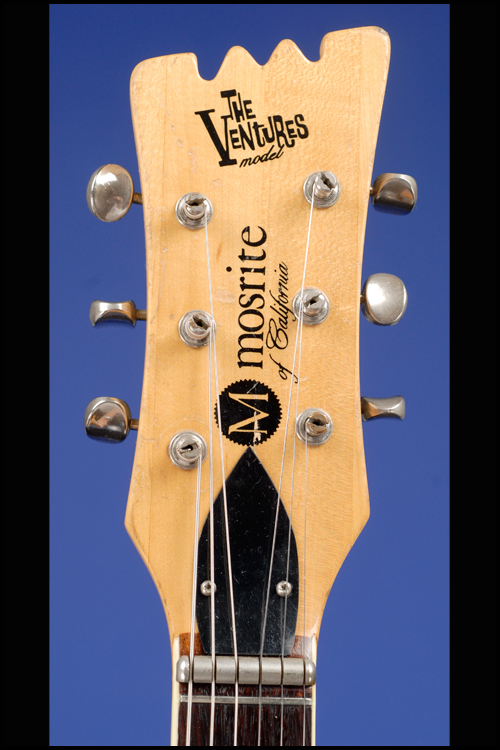
Moseley continued to have health and business problems throughout this period, but things started looking up again in ’74 when he signed an exclusive distribution deal with Pacific Music Supply Company, one of the early pioneers in the mail-order music business. In ’73, Moseley introduced a one-pickup monaural version of the Stereo 350, which is no doubt scarcer than its stereo sibling. This sounds remarkably like Dave Bunker’s “tensionless neck,” but whether or not he got the notion from Bunker is unknown. In 1972, Moseley developed another novel guitar, the Brass Rail, with a “rail” of brass down the neck to give added stability. Probably not that many, since these don’t come around that often. The Stereo 350 was technically in production from 1971 to ’75, but how many were actually made is unknown. This may very well be the earliest example of this, at least on a production guitar. There are two jacks one is a normal monophonic output, but when the little slider is in the right position each pickup has its own jack for output to two different amps, two channels on the same amp, or different effects chains. The pickup selector and controls are pretty standard, but what makes this guitar special is its output wiring. Atypical is the slab body ( without the German carve).

The angled fingerboard end and neck pickup angle are typical Moseley. This is interesting because this was also done on Japanese-made Acoustic Black Widows of the time, and Moseley reportedly built a couple hundred of those. The neck is bolt-on maple with a tongue that extends into the body, under the neck pickup. The “NM” likely means “natural mahogany” since the body is mahogany and the finish is natural.
#Mosrite californian guitar serial number
Its serial number (A0060) probably means it was the 60th one produced. The Stereo 350 21406 NM was probably an early example of this fine guitar. In late 1970 or early ’71, he returned to making guitars on a limited basis, designing new models like the Bluesbender and Stereo 350. Sears bought the name but never used it and by the following year, Semie had scraped together enough money to buy it back. Not adept at the business aspect of running a guitar company, things began to unravel for him, and in ’69 Mosrite went bankrupt. In ’67, the Ventures deal ended – and Semie’s tribulations began. Moseley was on his way! He reached a licensing agreement with the Ventures’ management and began producing Ventures models in ’63. Semie offered to give it to him, but Edwards insisted, and paid $200. Voila! What became the Ventures guitar had arrived! Some 25 or so Mosrite Standels were built circa 1962, including one for a local guitarist named Gene Moles, who showed it to Nokie Edwards (of the Ventures), who stopped by to get one. Moseley took a Strat, flipped it over, and traced it. He asked Semie to design a guitar like a Fender Stratocaster… but not like one. There, an evangelist named Ray Boatright, with whom Moseley traveled and performed, encouraged him to go into business, and supplied him with tools from Sears Mosrite – a blending of the names Moseley and Boatright – was born.Īmong Moseley’s early gigs was a challenge to design a guitar for Bob Crooks, who built Standel amplifiers and wanted to get into the guitar business. In 1960, Moseley moved to Bakersfield, California. Moseley continued building his own guitars while at Rickenbacker, which made Barth suspect he was copying theirs.

It was there he met Roger Rossmeisl, the German luthier, and was introduced to the German carve, a relief around the top edge that characterized many of Moseley’s guitars thereafter, including the Ventures models. Following a tiff with Bigsby, he began building his own guitars, and at some point in ’52 or ’53 began making necks for Paul Barth at Rickenbacker. In ’52, Moseley began his career doing piece work for Paul Bigsby. Not that we know that much about it, anyway! And we might not know anything about this circa 1971 Mosrite Stereo 350 Model. In fact, if it hadn’t been for his serendipitous relationship with The Ventures, he might have been one of those obscure guitarmakers we have to scramble to identify.

Remember that line from the old song, “If it weren’t for bad luck, I’d have no luck at all…”? In some ways, it’s a summation of the life of Semie Moseley.


 0 kommentar(er)
0 kommentar(er)
